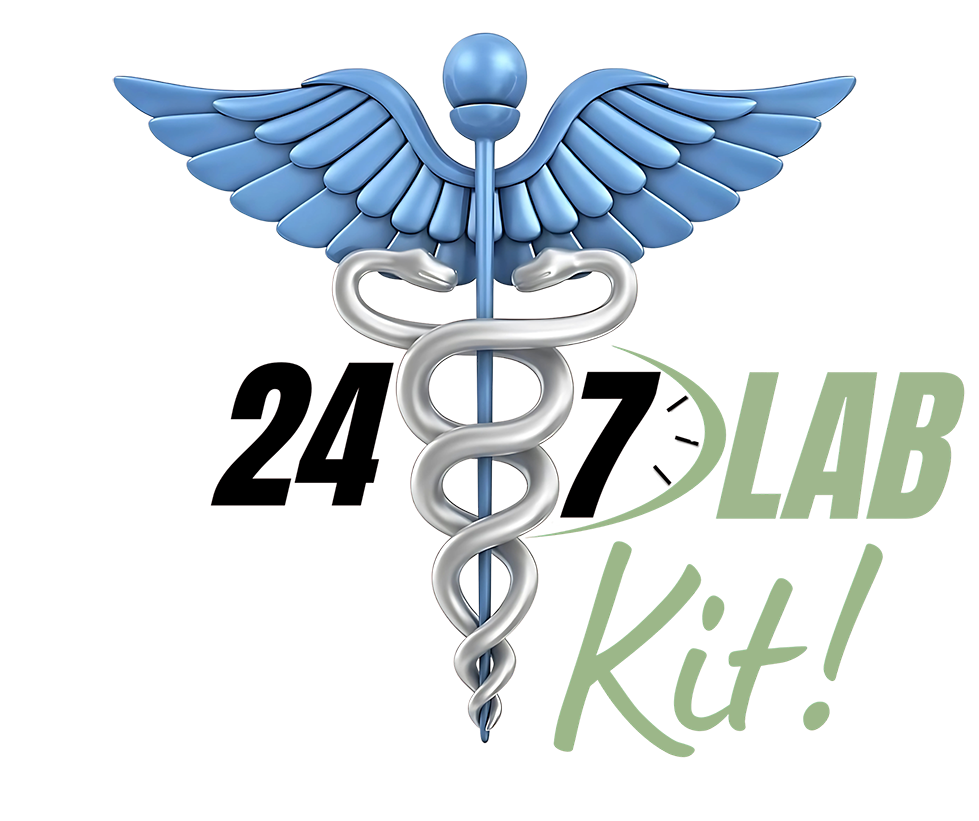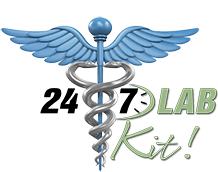The Complete Guide to STIs and STI Testing at Home
STIs or sexually transmitted infections are a major health problem issue around the globe. Despite how easy it is in today’s society to get tested and seek treatment, it seems like the spread of STIs continues to increase. Much like many common STDs, if an STI is left untreated, they are capable of causing fertility issues, pregnancy complications, stillbirth, chronic disease, and even death. In turn, regular STI testing is key for protecting yourself, your partner(s), and your family.

Today, approximately 20% or 1 in 5 people in America are afflicted with an STI on any given day, according to the CDC. Luckily, as a response, many companies (like 247Labkit) have made it easier than ever to access an STI home screening kit for testing from the comfort and privacy of home. In this blog, we’ll discuss everything you need to know about STIs, STI symptoms, and STI testing at home.
How is an STD Different from an STI?
What is the difference between an STD and STI? STD is short for sexually transmitted disease while STI stands for sexually transmitted infection. The main difference is that not every STD begins as a result of an infection. An infection occurs when a virus, bacteria, or parasite invades your body, and your immune system kicks in to combat it. On the other hand, disease occurs when the infection produces symptoms, damage to the body, and eventual illness.
What are Common STIs?
Whether you’ve been tested for STDs or STIs before or this is your first time considering it, chances are you’ve heard of many of the common sexually transmitted infections and diseases. If not, below we’ve listed the more common ones with a bit of information on their symptoms and treatment. Check it out.
HPV
Coming in at number one out of the top most common STIs, HPV or Human PapillomaVirus is a sexually transmitted infection with over 100 varieties, according to Mayo Clinic. While some variations cause skin and mucous membrane warts and growths, others can result in different types of cancer such as uterine, anal, cervical, or genital cancer in all genders.
Unfortunately, HPV is one of those STIs that doesn’t always present symptoms. It is common for sufferers to have the infection without even knowing about its existence. So, if you’re sexually active, consider getting an HPV test rather than taking the risk of not knowing. With the convenience of STI test delivery, it’s easier than you probably ever thought.
Now, while there aren’t always presenting symptoms, that isn’t to say symptoms never exist. The following are the most common HPV symptoms.
- Genital warts
- Common warts
- Plantar warts
- Flat warts
Herpes
Caused by the Herpes Simplex virus, herpes is another common STI that affects all genders. Known to cause pain, itching, and small sores in the beginning, this infection isn’t just one of the more common–it’s one of the more unpleasant. In America alone, 50 to 80% of the population has oral herpes while 1 in every 6 has genital herpes. This viral infection is transmitted through oral-to-oral contact, which can also be passed on to the genitals.

More often than not, herpes is asymptomatic, meaning it doesn’t show any symptoms. However, when it does – you’ll know it. These symptoms include:
- Painful blisters or open sores in/around the mouth
- Pain or itching
- Scabs
- Fever
- Muscle aches
- Swollen lymph nodes
- Painful urination
Much like the other STIs and STDs, if herpes is left untreated, it can have a negative long-term impact on your health. For starters, you’ll continue to have regular outbreaks both on your mouth and genitals depending on which type of herpes you become infected with. Untreated genital herpes can lead to difficulty urinating, vaginal yeast infections, and, occasionally, meningitis.
Syphilis
Syphilis is a bacterial infection often spread through sexual contact. According to Very Well Health, it is most common in men who have sex with men. Beginning as a painless sore that usually appears on the genitals, mouth, or rectum, it is one of the more dangerous STIs if left untreated. The infection itself develops in stages, each with its own signs and symptoms. In all, there are four stages of Syphilis infection.
Primary Stage
In this first stage, you are likely to notice one or more sores located in, on, or around the penis, vagina, anus, rectum, lips, and/or mouth. These sores are often round, firm, and painless, lasting from 3 to 6 weeks in total.
Secondary Stage
In the secondary stage, those infected with syphilis may have rashes or sores in the mouth, anus, or vagina. This rash usually appears on several parts of the body and can show up either alongside the sore or weeks after it heals. It can appear on the hands and bottom of the feet, presenting a rough, red, or reddish-brown appearance.
Other symptoms may include:
- Swollen lymph nodes
- Fever
- Patchy hair loss
- Sore throat
- Fatigue
- Muscle aches
- Weakness
Latent Stage
The third or latent stage of syphilis is the only one in which there are no symptoms. And without treatment, it can continue to exist for years within the body.
Tertiary Stage
The majority of those with untreated syphilis never develop tertiary syphilis. However, those that do experience a negative impact on their various organ systems, including the heart, brain, blood vessels, and nervous system. This is a very serious stage that can occur 10-30 years following the initial infection, and due to the damage it causes to the organs, it sometimes results in death.
Hepatitis

Hepatitis means inflammation of the liver–a vital organ responsible for processing nutrients, fighting infections, and filtering the blood. When the liver suffers from inflammation, its function can also be affected. A person can contract hepatitis in various ways, ranging from shared or infected needle use, heavy alcohol use, toxins, certain medications, and other medical conditions. If left untreated, you could be looking at severe scarring or even cancer of the liver. Symptoms of hepatitis include:
- Fever
- Fatigue
- Vomiting
- Nausea
- Dark urine
- Joint pain
- Jaundice
- Light-colored stool
Trichomoniasis
Also known as trich, trichomoniasis is a common STI that can occur as a result of multiple sexual partners or sex without protection. This infection causes several unfortunate occurrences ranging from foul-smelling vaginal odor, discharge, genital itching, and painful urination in women. In men, there typically aren’t any obvious symptoms, so they often remain unaware of the infection. If left untreated in women, trichomoniasis can cause fertility issues, pregnancy complications, and premature birth. Trichomoniasis symptoms include:
- Painful or itchy genitals
- Pain during urination
- Pain during ejaculation in men
- An increase in vaginal discharge
- Sore or swelled foreskin
- Increased urination
Gonorrhea and Chlamydia

Both gonorrhea and chlamydia are sexually transmitted infections that share numerous similarities–which is why they are often lumped together. Some of their overlapping symptoms include a sore throat, pain in the rectum, abnormal genital or anal discharge, and burning or discomfort during urination. These infections are considerably easy to treat and can be cured using common antibiotics. If left untreated, these STIs can spread into the pelvic area, infecting the uterus, fallopian tubes, and ovaries. Ultimately, this can also result in PID or pelvic inflammatory disease.
How Do I Find Reliable Home STI Testing?
Now that you understand a bit more about STIs and how they can affect your life, especially when left untreated – you may want to consider an STI home screening kit. At 247Labkit, we make it easy to get a STI test kit that can be used at home, allowing you to avoid the stigma and embarrassment of visiting the doctor. The World Health Organization says there are a million new STIs acquired daily worldwide. If you’re sexually active, get your STI test today and take your health into your own hands.




Comments are closed